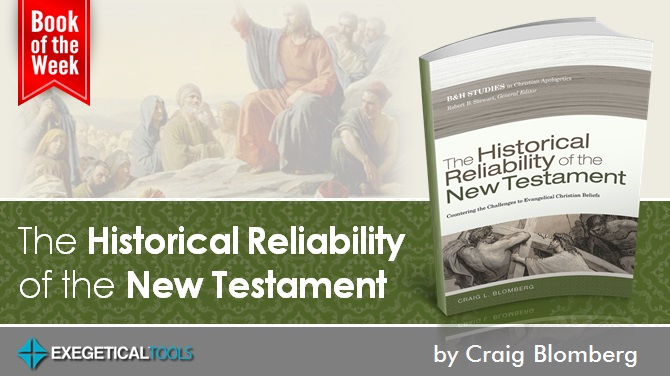Craig Blomberg has spent the span of his career studying the historical reliability of the New Testament. His first published book was his dissertation on the historical reliability of the Gospels. Since then he has written several other works on the same topic, covering John and other focused questions about the New Testament.
Blomberg’s latest gift of scholarship is an 800-page work that covers topics of historical reliability across the entire New Testament. The Historical Reliability of the New Testament (B&H Academic, 2016) is a fitting companion to its counterpart by Kenneth Kitchen, On the Reliability of the Old Testament. Like Kitchen, Blomberg is well-situated for this project, being a senior scholar and a leading expert on the topic. The purpose of the work is to render complex, academic discussions in accessible, bite-sized discussions for laymen, students, pastors, and even academics.
The book divides into six parts, covering the Synoptic Gospels, the Gospel of John, Acts and Paul, the rest of the NT, canonicity and transmission, and the problem of miracles. The first four parts of the book are what you might expect. Blomberg takes contentious historical issues throughout the canon (such as differences between Synoptic accounts, the time of Jesus’ death in John, etc.) and hashes them out one by one. He interacts with major theses and works that have argued them, while omitting the plethora of minor studies that have taken on the subjects, for the sake of space.
The last two parts of the book, though, are somewhat unique and a delightful bonus. Part five on canonicity and transmission covers the New Testament apocrypha, the Nag Hammadi documents, and also some of the more recent finds that have generated discussion in the past few decades. These include the Gospel of Judas, the Jesus’ wife fragment, the Secret Gospel of Mark, as well as the ancient agrapha. Blomberg moves through the evidence and the history of these documents’ research, publication, and controversy with ease, making it a pleasure to learn about them. The rest of part five covers textual criticism and issues of the formation of the New Testament canon.
The final part discusses the problem of miracles, covering scientific and philosophical problems, criteria for authenticity, different types of miracles, and a useful twenty pages on the resurrection. Blomberg engages the historical and hermeneutical claims of Lüdemann, Crossan, Horsley, Borg, and other skeptics. Of course this part of the book cannot replace Craig Keener’s unbelievable two-volume work on miracles, but it certainly can act as an informative primer before moving on to a larger work on the topic.
Importance
Blomberg’s work will be a tremendous resource for students, pastors, and even scholars. His coverage of issues is so immense that he can not give as much space to issues as some would like, but as a primer on all the major historical problems in the NT, Blomberg just may have produced the premier resource.
Although he generally cites only the major works on a topic, it is obvious he has interacted with the minutiae from articles and monographs. The fact that he has been specializing in the NT’s historicity since his doctoral work also speaks to the value of this volume.
I could quibble with some pages here and there, but the bottom line is that this book honestly deserves a spot on the shelf of everyone who might ever have to discuss the historicity of the NT. It will serve as a quick resource for preparing sermons on problematic texts and for ministerial apologetic purposes.
Many thanks to Blomberg for seeing this large and comprehensive volume into production.
Preview or buy it here on Amazon.


